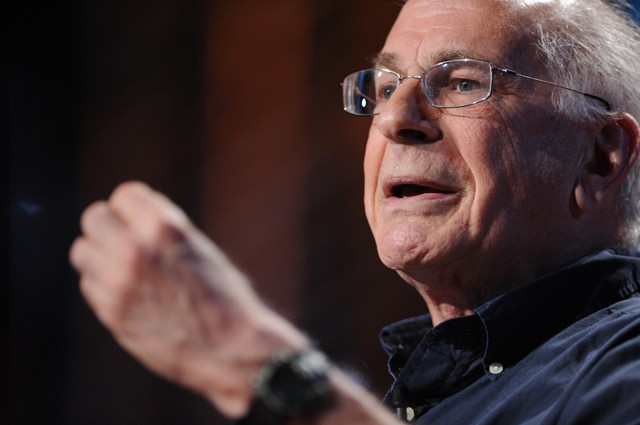The Invisible Children in the Seminar Room: Kony 2012 and digital activism.
Since its earliest days there has been a great deal of writing about online activism and the possibility of forming active networked publics via digital communications – most notably the Internet. The works of Atton (2004), Fraser (2005), Ubayasiri (2007) and Boler, (2008) point to both the history of this ongoing discussion and to the various perspectives from which it has been explored. Indeed, the topics of digital activism and digital publics remain central enough to the study of digital media today that both regularly appear as subjects on undergraduate and postgraduate digital media courses, including the one that I convene at the University of Sussex.
A few weeks ago, during a discussion about online publics, my students began talking about ‘Kony 2012‘ and the Invisible Children project: a viral video which, if you have not already seen it, you may well have heard about though it might not have been via the intended channels of communication prescribed by Invisible Children inc. On 16th March San Diego Police Department detained Jason Russell, the co-founder of the Invisible Children project and ‘star’ of the Kony 2012 video, when he was found walking naked along a sidewalk, allegedly masturbating, talking to himself and slapping the pavement with his hands. Needless to say, the medium that brought us ‘Kony 2012’ also brought us footage of the founder’s nude meltdown.
Much has been written in the popular online press and in the blogosphere about this video campaign, which is aimed at pressuring the US government into (continuing to) resource the effort to capture Joseph Kony, the notiorious war lord leader of the unaffiliated Lord’s Resistance Army (LRA). For me, the success (and perhaps limitations) of this viral campaign might best be judged by the discussions that ensued when the Kony video was mentioned in my class. In terms of ‘going viral’ and having a global digital presence, the Invisible Children video seems to have been a huge success. Almost all of my students had heard of the YouTube video and reported seeing it mentioned all over their Social Networking platforms – Twitter, Facebook, blogs, Reddit. If success can be measured through ‘being known about’, the campaign has proven highly effective.
Of course the success of any kind of activism cannot be judged solely on its ‘being known about’. Indeed a (highly unscientific and totally anecdotal) poll of my students revealed that while they had a high level of awareness of the ‘Kony 2012’ phenomenon, almost none of them had any idea as to what the video was about, having not watched it beyond the first (admittedly rather clichéd) few minutes – not so much Kony as corny. Some thought it was the trailer to a new film, the latest example of a production company using social media to promote its latest blockbuster. Judged from the perspective of being ‘known’ rather than ‘known about’ I would argue that the Invisible Children campaign has had limited success.
Of course the impact of online activism remains hotly contested. We need only look ‘back’ to the Arab Spring to see some commentators such as Clay Shirky claiming that the protests across the Middle East was a Twitter Revolution, while others claimed that to label the uprisings in Tunisia, Libya and Egypt in this way was both inaccurate and offensive to those who had long campaigned for political reform in these countries. Meanwhile, the highly localised nature of the “Occupy” demonstrations in cities as diverse as Seattle, Hong Kong and Penang have drawn upon a collective global strength that has been produced and maintained via digital methods of communication. In the UK, the student protests of 2011 were bolstered by the creation of linked groups of activists on social media platforms such as Facebook.
What is perhaps most interesting about the Kony campaign, however, has not been so much the use of social media in order to help a video go viral, but the ways in which those same platforms have become sites for a critical interrogation of the Kony campaign and, more broadly, of this form of online activism. The trajectory of the Kony 2012 campaign has been far from smooth. Early on in its trending, academics, journalists and other citizens of the Net raised concerns about the way in which Invisible Children inc. chose to launch (what might be interpreted as) a global man-hunt for an individual, using the politics of the spectacle while also obfuscating the real issues that lie behind this story – namely the political turmoil in Uganda that created a context in which people like Kony can profit.
Then there was the criticism of the project from the Ugandan government – a criticism that was voiced via YouTube no less – in which they pointed out that Joseph Kony and the LRA had fled Uganda and had moved into neighbouring countries.
Initial criticism of the video’s aims were later joined by reports that Invisible Children received funding from an Evangelical Christian organisation that is avowedly anti-gay and homophobic. Others added their comments to the ongoing critique of Kony, which ran parallel to (and at times intersected with) the Kony campaign itself. Then there was the financial criticism of the organisation. According to some, only 6% of the money raised by resource packs sold by the organisation (allowing citizens to display posters and other visual material about the Warlord) went to supporting interventions that directly aided Ugandan children. Meanwhile speculation continues as to how much money has been spent on producing the video.
This kind of criticism – activists critiquing other activists – is not a new phenomenon, and it chimes with Mark Jancovich’s (2002) work on subcultures, where (in another very different context) groups who are perceived as being ideologically close to one another are more likely to attack one another as they are the hegemony.
What I find both fascinating and useful about the Kony incident however is its invocation of a digital public. What we have witnessed over the last month has been the creation of an active public engaged in (mostly) rational and (sometimes) heated debate about an issue that affects not just Ugandans but all citizens of the world. From a Habermasian perspective we could, of course, argue that the Invisible Children group may in fact not be acting in a disinterested way, bracketing off private interests. While this may delegitimise any claim for seeing the video itself as an intervention into the public sphere, I do not think it renders the discussions that have sprouted around the video as politically redundant. Far from it.
Whether you approve of the Kony 2012 video or not, whether you subscribed to its message and bought an action pack or whether you decried the video for being sensationalist, short-sighted or a cynical marketing tool is perhaps not so relevant when thinking about Kony through the lens of the digital public. What the Kony 2012 project shows us is the production of a live, real-time public who gathered around a specific issue (child soldiers in Uganda) and discussed what would be an appropriate, effective and politically useful response to it. Kony 2012 was, in my opinion, not the right response to the human rights failings that everyday Ugandans are facing even now. But it did at least start the discussion – though thankfully it did not monopolise it for long.
When students claim that the Internet is the saviour of the public sphere I often cringe inwardly, and I will continue to do so no doubt. But the Kony affair does give me an opportunity to demonstrate how networked publics might be enabled. Betting on the fact that next year’s cohort won’t remember who Kony was, it also exposes the challenges that such networks face in terms of sustained political action after the spectacle has lost its lustre and the controversy has stopped trending on our Facebook pages.

































































































